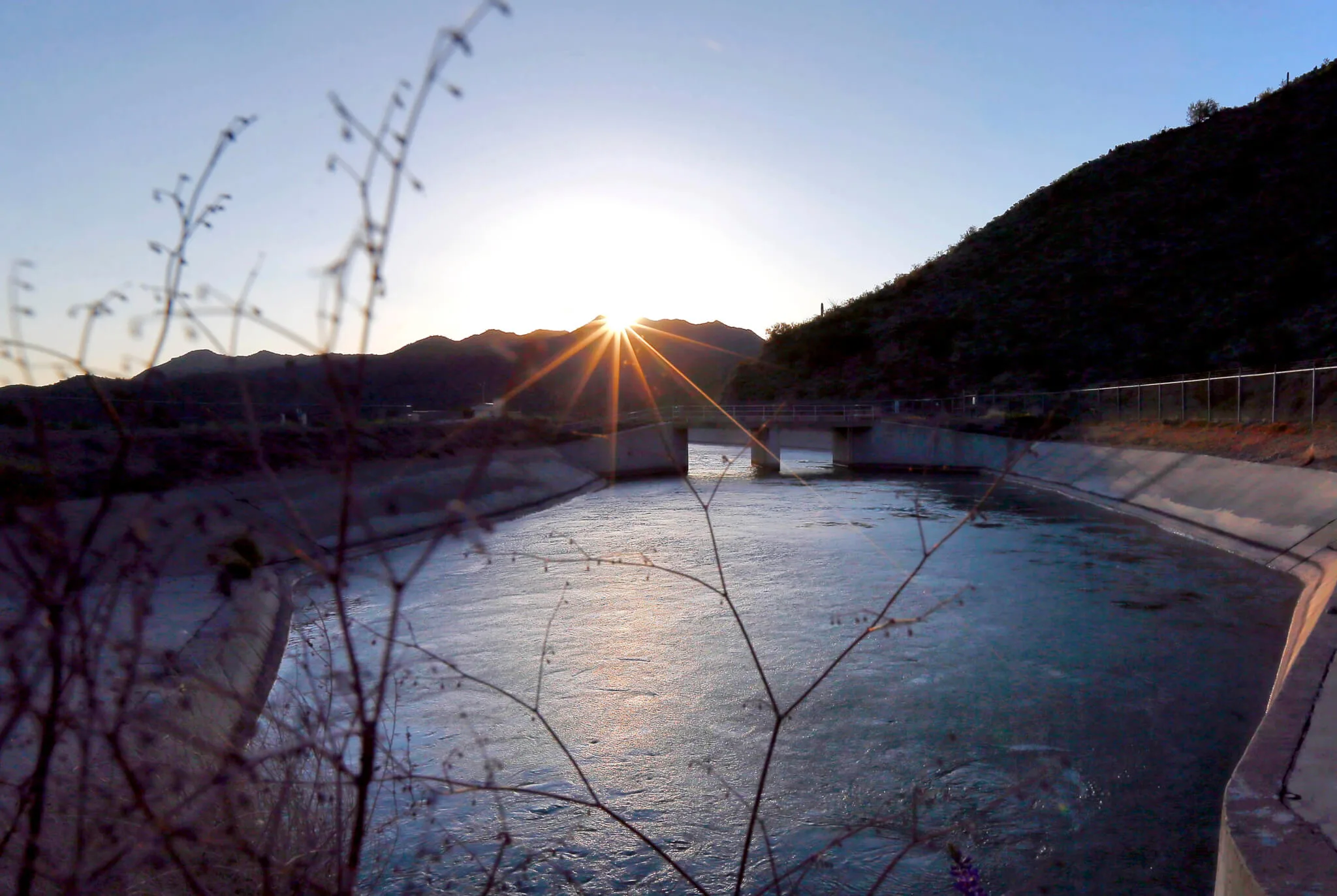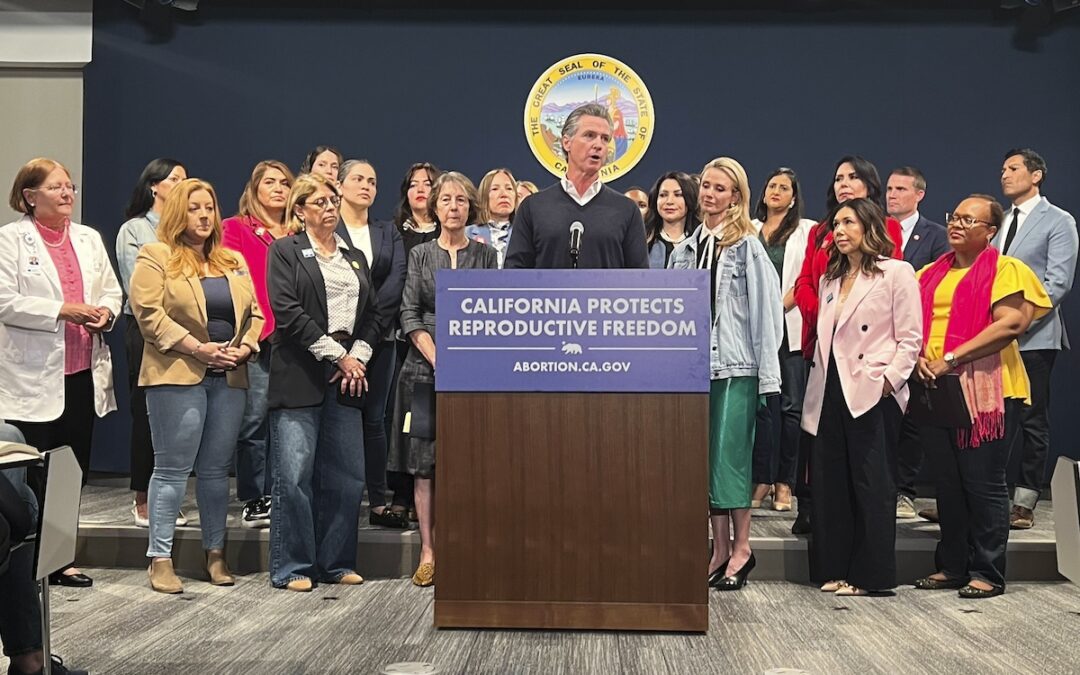
AP Photo/Matt York
Water could soon be running low in Buckeye, Wickenburg, and just about everywhere in between.
During her State of the State address, Democratic Gov. Katie Hobbs announced that she would make public a previously unreleased report on the West Valley’s water supply—specifically, that the region is running short in its mandatory 100-year reserve.
Hobbs also criticized former Gov. Doug Ducey’s decision to not release the report. “I do not understand, and do not in any way agree with, my predecessor choosing to keep this report from the public and from members of this Legislature,” she said.
The report showed the West Valley has a total unmet demand of 4.4 million acre-feet of water over a 100-year period.
What Does It Mean?
In other words, “there is more demand than there is water in the ground,” Arizona State University’s Kyl Center for Water Policy Director Sarah Porter said. “All the groundwater for the next 100 years is allocated.”
The research to unearth the amount of unmet demand was done through three components: water assured certificates that have already been issued and approved, any current groundwater pumping, and any long-term storage credits.
The data and requirements around these three areas are analyzed for 100 years in the future “to see what we get,” the Arizona Department of Water Resources’s Chief Hydrologist Ryan Mitchell said. The model that followed showed the large unmet demand.
RELATED: Explained: Scottsdale and Rio Verde Foothills’ Battle Over Water Supply
“In the end we say, what’s the total volume of water that is allocated but not available?” Mitchell said. “That’s essentially what the 4.4 million acre-feet comes to.”
Several regions in Arizona—including the Phoenix metro area— are required by state law to have enough groundwater to meet the needs of any developments for 100 years. If it doesn’t, developers looking to build subdivisions on the land will not be able to do so, as the state’s Department of Water Resources (ADWR) will not be able to approve those developments.
The Arizona Legislature passed the Groundwater Management Act in 1980. This protects consumers by requiring developers to demonstrate that the area they are looking to develop has enough water supply for 100 years. If that water supply is proven, developers receive an assured water certificate and are given the green light to start building.
Areas that require this assurance are called Active Management Areas, or AMAs. AMAs are areas with a heavy reliance on groundwater resources and therefore require extra protection. The state has identified and designated five AMAs located in Prescott, Phoenix, Pinal, Tucson, and Santa Cruz.
Certified to Build, But Not Enough Water
The study showed that the Lower Hassayampa Sub-Basin, located in Phoenix’s West Valley, is short on its 100-year supply.
Despite this, several developments in the area have received assured water certificates and are cleared to build. Developers who had not received their certificate before the report was released, however, aren’t so lucky, as they can’t rely on groundwater to meet the 100-year requirement.
While already-cleared developments are allowed to proceed, any new developments, housing, and projects in the region are “not going to be able to rely on groundwater as their water source,” Mitchell said. “So they are going to need to come to the table with some additional water supplies.”
Water Officials Look for Solutions
ADWR Director Tom Buschatzke said in a news release that the department “previously worked with stakeholders in the West Valley that are subject to the Assured Water Supply program to seek solutions to the shortfall projected in the Hassayampa model.”
For ADWR, potential solutions are still in the works. “Let’s think creatively and figure out what’s doable physically, what’s doable legally,” Mitchell said. “That’s still being pioneered.”
Developers looking to secure a water supply still have several options, Porter pointed out.
RELATED: Former Undocumented Immigrant Ylenia Aguilar Begins New Role On Central Arizona Water Conservation Board
One of those ways is long-term storage credits, meaning groundwater that has been stored in the ground elsewhere that developers could acquire and move to their development.
There is interest in developing this type of groundwater supply in the nearby Harquahala Basin, Porter said, which could then “potentially be transported to the Lower Hassayampa for development.”
Another option would be to make a deal with the Colorado River Indian Tribes through the newly passed Colorado River Indian Tribes Water Resiliency Act of 2022.
On Jan. 5, President Joe Biden signed the act, which will allow the tribes to exchange and store a portion of its allocated water from the Colorado River. The tribes hold the rights to around 20% of the water in the Colorado River Basin.
This would allow developers of the Lower Hassayampa Sub-Basin to make deals with the tribes to lease and use that water.
Long-Term Solutions Needed
There are also longer-term projects that could help, Porter said, such as ideas to “enlarge one of the two SRP (Salt River Project) dams on the Verde River, and that could lead to new water supplies.”
There is also another idea that could change the regulations around how much water SRP can store in the Theodore Roosevelt Dam, which is located on the Salt River in northeast Phoenix.
“Those are all new possibilities for new water supply. They all would take some doing to make happen,” Porter said. “They’re not just going to happen overnight.”
There is another possibility: Development could decrease in the region depending on the decisions of the developers. With less development, less water is needed to meet the 100-year requirement.
“It will just be a matter of whether those developers that want to develop on lands for which they have not acquired an assured water supply, want to invest in importing water supplies,” Porter said.
However, for people already living in homes in this region, they do not need to be concerned.
“Any home that’s already there and built and people are living in it, they’ve already received their 100-year assured water supply analysis and certificate,” Mitchell said. “They’re already covered. It doesn’t impact them at all.”
But, there should be concern surrounding the community’s long-term water supply.
“At some point, all of that groundwater is going to be used up and those places will need another water supply,” Porter said. “They should be thinking about where the water supply for this area will come from when the 100-year supply is used up.”
ADWR will also release a report about the whole Phoenix AMA’s groundwater and water flow model at the end of March, which will be “more comprehensive and larger,” Mitchell said.
Looking for the latest Arizona news? Sign up for our FREE daily newsletter.
Politics

Democrats successfully force vote on repealing 1864 abortion ban, passes House
The Arizona legislature moved forward two bills Wednesday that would repeal the state’s 1864 abortion ban. A bill to repeal the ban has been...

State Official: 1864 abortion ban gives Arizona ‘black eye’
Arizona’s role at the forefront of the climate crisis, defending democratic elections, and protecting reproductive rights has caught the attention...
Local News

Arizona Sens. Anthony Kern, Jake Hoffman, indicted for fake election scheme
Eighteen individuals involved in a conspiracy to overturn Arizona’s election results in 2020 were indicted by a grand jury Wednesday and charged...

Gov. Gavin Newsom wants to let Arizona doctors provide abortions in California
California law generally allows abortion up to the point of fetal viability, which is around 24 weeks. SACRAMENTO, Calif. (AP) — Arizona doctors...




